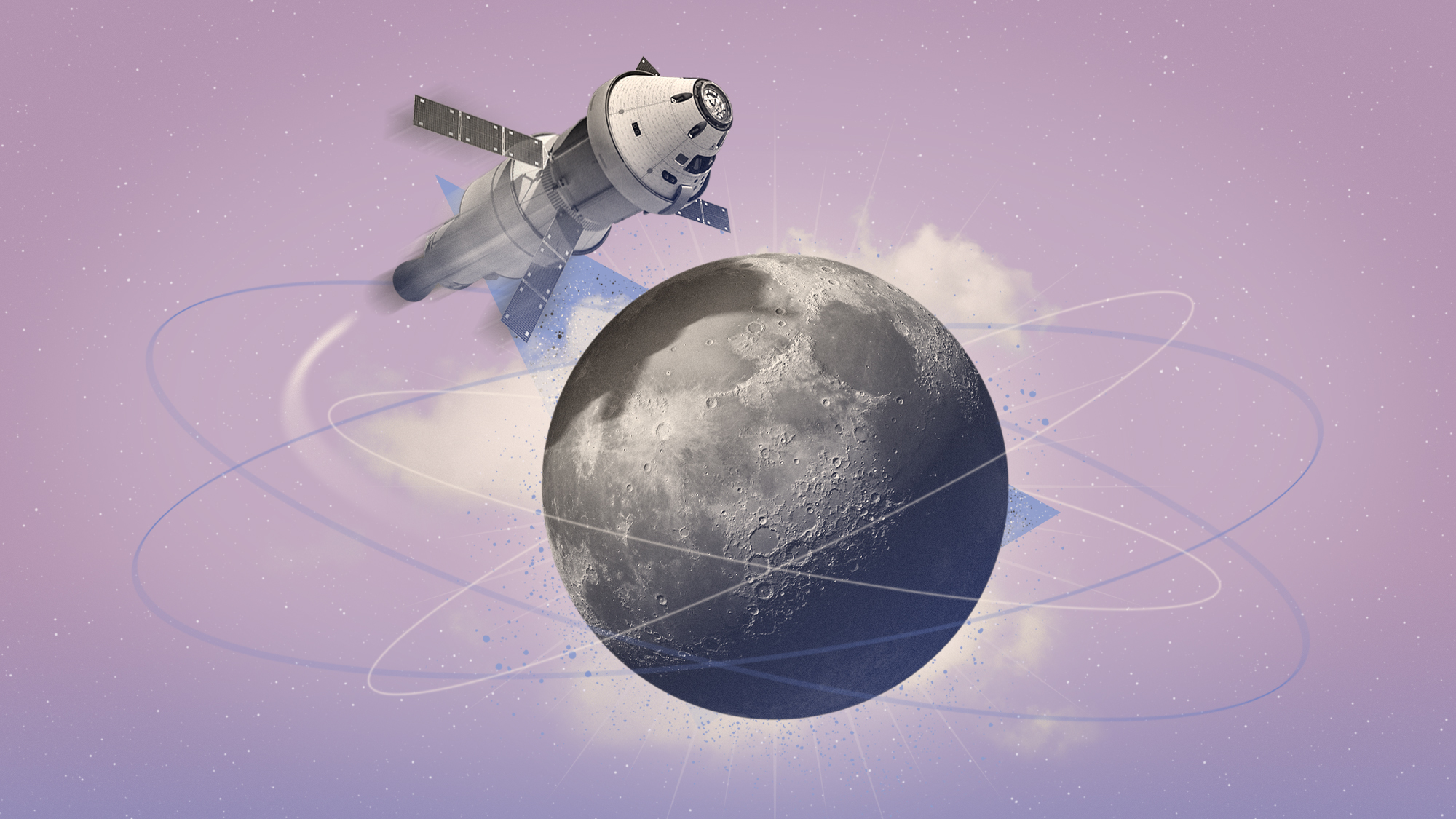The Democratic coalition is too big
Can this fractious, wildly diverse, and quite possibly incoherent party hold together in 2020?


Is the Democratic coalition too big to win the presidency in 2020?
It sounds like a joke — a political version of the old Yogi Berra one-liner about a local restaurant: "Nobody goes there anymore. It's too crowded." Yet however paradoxical, the statement about the Democrats may nonetheless be true. The party could well be too capacious to coalesce around any single candidate with sufficient intensity to take down President Trump.
The Democratic electorate is extremely broad in ideological terms. During the last presidential cycle, a lifelong socialist independent who joined the Democrats only to compete for the party's nomination managed to come in a strong second place to a center-left candidate fully supported by the Democratic establishment. Four years later, a billionaire who's most accurately described as a liberal Republican is attracting modest but significant support among a very different kind of Democrat before he's even officially joined the race.
The Week
Escape your echo chamber. Get the facts behind the news, plus analysis from multiple perspectives.

Sign up for The Week's Free Newsletters
From our morning news briefing to a weekly Good News Newsletter, get the best of The Week delivered directly to your inbox.
From our morning news briefing to a weekly Good News Newsletter, get the best of The Week delivered directly to your inbox.
The distance separating Bernie Sanders from Michael Bloomberg is impossibly vast. Yet those are the ideological boundaries of the Democratic Party in 2019.
But the party's diversity isn't limited to ideology. Young and old voters support different candidates, and so do those from different regions, races, classes, and educational attainments. It would be one thing if all of these factions could be counted on to join together after the primaries in enthusiastic opposition to Trump. But they can't be — at least not enough to guarantee a general election victory in the Electoral College.
It's important to understand why.
One important faction in the party is made up of older, white working-class voters, many of them lacking a college degree, and a good number of them living in the Midwest. These Democrats tend to be fairly conservative on social and cultural issues while being open to more ambitious plans for fixing America's long-term economic and environmental problems. Joe Biden, still the Democratic frontrunner in most national polls, draws a lot of support from this faction, but Elizabeth Warren has begun to do well with them, too. A significant group of these voters supported Barack Obama in 2008 and 2012 but switched to Trump or stayed home in 2016 out of an aversion to Hillary Clinton.
A free daily email with the biggest news stories of the day – and the best features from TheWeek.com
Then there are African Americans, who tend to live in the urban areas of the Northeast, Midwest, and West Coast, and in the rural South. So far they have strongly supported Biden's candidacy — because of warm feelings built up during the eight years he served as Obama's vice president, but also because they, like older, white working class voters in the Midwest, and like Biden himself, tend to be more socially and culturally conservative than the leadership of the institutional party. This faction showed up in extremely high numbers to vote for Obama both times he was on the ballot. They were less enthusiastic for Clinton in 2016. That decline in excitement, when paired with the parallel drop in support from white working-class voters, contributed decisively to Trump's shocking victory three years ago. Unless the party's nominee in 2020 reverses this, the outcome could be the same this time around.
Finally, there are highly educated white liberals living in cities, inner-ring suburbs, and college towns, who tend to be very liberal on social and cultural issues. Many of them, especially younger ones, are open to and enthusiastic about taking a far more aggressive approach to taxation and regulation. Hence their strong support for the Sanders and Warren campaigns (with men favoring the former and the most liberal and educated voters leaning toward the latter).
Yet these same urban areas, especially those in the Northeast — sometimes referred to somewhat pejoratively as the Acela-corridor, named after the pricey, high-speed Amtrak rail line that's the choice of wealthier business travelers in the region — are also the home of those older and economically well-off Democrats who feel tempted by the prospect of a Bloomberg bid for the presidency. This group would probably fall in behind Biden if he prevails in the primaries, but its members are increasingly anxious about whether the verbally enfeebled septuagenarian has what it takes to defeat Trump. Hence their willingness to entertain supporting the former three-term mayor of New York City.
That's the Democratic Party today. Beating Trump depends on finding a candidate who can galvanize all of these disparate factions. The Democrats need, all at once, to get white Midwestern conservatives to return to the party after they either switched to Trump or stayed home in 2016, and inspire a level of enthusiasm among black voters that approaches what they felt when Obama was running, and keep white urban and suburban liberals engaged enough that they both show up to vote for the party's nominee a year from now and refuse to back a third-party candidate from the socialist left if Biden gets the nomination or one from the plutocratic center if Sanders or Warren do.
If that sounds impossible, that's because it may well be — at least without a once-in-a-lifetime political talent like Barack Obama at the helm, willing and able to bring this fractious, wildly diverse, quite possibly incoherent party together. Having a widely despised Trump provoking the party every day will help. But there's very little reason to think that negative partisanship will be sufficient. That's because certain factions of the Democratic electoral coalition fear and loathe other factions of their own party almost as much as they fear and loathe the Republican president.
Unless and until that changes, the Democrats will find it more difficult to prevail than one might be led to suspect from looking solely at the persistent and deep unpopularity of the man they will be facing next November.
Damon Linker is a senior correspondent at TheWeek.com. He is also a former contributing editor at The New Republic and the author of The Theocons and The Religious Test.
-
 Artemis II: back to the Moon
Artemis II: back to the MoonThe Explainer Four astronauts will soon be blasting off into deep space – the first to do so in half a century
-
 The Night Manager series two: ‘irresistible’ follow-up is ‘smart, compelling’ TV
The Night Manager series two: ‘irresistible’ follow-up is ‘smart, compelling’ TVThe Week Recommends Second instalment of the spy thriller keeps its ‘pace’, ‘intrigue’ and ‘sly sexiness’
-
 11 hotels opening in 2026 to help you reconnect with nature
11 hotels opening in 2026 to help you reconnect with natureThe Week Recommends Find peace on the beaches of Mexico and on a remote Estonian island
-
 Bari Weiss’ ‘60 Minutes’ scandal is about more than one report
Bari Weiss’ ‘60 Minutes’ scandal is about more than one reportIN THE SPOTLIGHT By blocking an approved segment on a controversial prison holding US deportees in El Salvador, the editor-in-chief of CBS News has become the main story
-
 Has Zohran Mamdani shown the Democrats how to win again?
Has Zohran Mamdani shown the Democrats how to win again?Today’s Big Question New York City mayoral election touted as victory for left-wing populists but moderate centrist wins elsewhere present more complex path for Democratic Party
-
 Millions turn out for anti-Trump ‘No Kings’ rallies
Millions turn out for anti-Trump ‘No Kings’ ralliesSpeed Read An estimated 7 million people participated, 2 million more than at the first ‘No Kings’ protest in June
-
 Ghislaine Maxwell: angling for a Trump pardon
Ghislaine Maxwell: angling for a Trump pardonTalking Point Convicted sex trafficker's testimony could shed new light on president's links to Jeffrey Epstein
-
 The last words and final moments of 40 presidents
The last words and final moments of 40 presidentsThe Explainer Some are eloquent quotes worthy of the holders of the highest office in the nation, and others... aren't
-
 The JFK files: the truth at last?
The JFK files: the truth at last?In The Spotlight More than 64,000 previously classified documents relating the 1963 assassination of John F. Kennedy have been released by the Trump administration
-
 'Seriously, not literally': how should the world take Donald Trump?
'Seriously, not literally': how should the world take Donald Trump?Today's big question White House rhetoric and reality look likely to become increasingly blurred
-
 Will Trump's 'madman' strategy pay off?
Will Trump's 'madman' strategy pay off?Today's Big Question Incoming US president likes to seem unpredictable but, this time round, world leaders could be wise to his playbook
